"Tigers" are burning
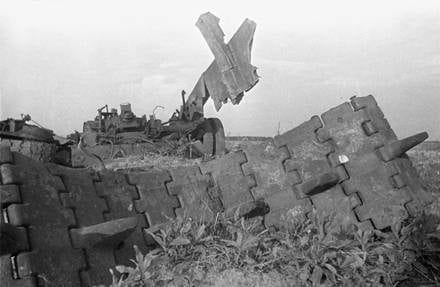
Military historians of the whole world, of course, have long and secondly painted the course of the whole battle, arguing endlessly about its course, plans, losses and results. Now we know that in fact the battle lasted seven days and that there was no through attack of two powerful avalanches tanksand that there was a Soviet frontal attack of German tanks, temporarily switched to defense, and that this led to heavy losses. We also know that, in addition to orders and directives, hundreds of thousands of soldiers breathed life into colorful arrows on staff maps at Hitler’s headquarters and Stalin’s office. At the price of their blood it was decided the fate of the Prokhorov battle, the road to which began long before that July day ...
“There must be no failures! ..”
With these words, in May 1943 of the year, Hitler concluded the final meeting with his generals on the operation “Citadel”? - the plan of the summer offensive of 1943. But, alas, despite such confidence of the German Supreme Commander, the military story She knew many examples when a well-planned and prepared operation was doomed to failure long before it began. Never before had Soviet intelligence been able to penetrate so deeply into the plans of the German command and so accurately determine the composition and resources of the enemy forces. Information from scouts Sandor Rado, John Cancross, Nikolai Kuznetsov, Alexander Aleksakhin, NKVD and GRU task forces, partisans and underground workers, military, aviation and intelligence has become one of the main building blocks of a future Soviet victory. The obtained information allowed Marshal G.? K.? Zhukov to propose his plan of action at the meeting with Stalin already on April 12, 1943: “I consider the transition of our troops on the offensive in the coming days to prevent the enemy inappropriate. It will be better if we exhaust the enemy on our defenses, knock out his tanks, and then, having introduced fresh reserves, transferring to a general offensive, we will finally finish off the main grouping of the enemy. ”
This plan was approved by the Stavka and made it possible for the first time in the history of military art that the Red Army moved on to strategic defense with its numerical superiority.
On the contrary, the plan of the German operation “Citadel” was to surround and destroy the Central and Voronezh fronts defending on the Kursk salute in the general direction to Kursk with powerful counter blows from the Orel and Belgorod regions, and then develop an offensive with the aim of reaching a deep Soviet rear and creating a threat to Moscow.
The main idea of the German plan was to create a significant superiority on the directions of the main attacks and, using tank units, massively quickly break through the defenses before the approach of large Soviet reserves. The enemy believed that the suddenness and speed of action, multiplied by the high penetrating ability of tank divisions, their best tactical training and high-quality technical superiority, would ensure success. The role of the main striking force in the upcoming offensive was assigned to the Wehrmacht, who received everything in large quantities, for weapons of the Wehrmacht, first of all heavy Tvi Tiger tanks, medium Panther TV tanks, Ferdinand and Brumbar assault weapons, and FokkeWulf190 assault guns "And attack aircraft" Henschel129 ".
The tasks of the enemy's strike groups in the operation “Citadel” were significantly “shorter” than those set by the Wehrmacht in 1941 – 1942. For example, the troops of Army Group Center should have advanced 75 km, and Army Group South, 125 km. But for such a “short” offensive, powerful forces were attracted: about 70% tank, up to 30% motorized, more than 20% infantry divisions operating on the Soviet-German front, as well as over 65% aviation. The German command sent more than 900 thousand personnel, about 10 thousand guns and mortars, more than 2,7 thousand tanks and assault guns and more than 2 thousand aircraft to carry out the operation "Citadel". These were selective troops of the Wehrmacht and the SS, commanded by the most experienced German generals: E. Manstein, G. Kluge, V. Model, G. Got, P. Hausser, and others.
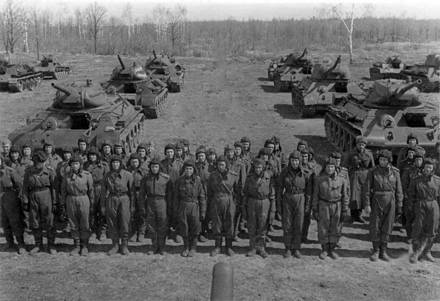
The Soviet command, in turn, placed its stakes on the deep separation of the combat forces of troops and defensive positions with a well-developed system of trenches, communication lines and other engineering structures, on new tactics of anti-tank defense, the use of large strategic reserves and high combat spirit of soldiers and officers, markedly increased after the victory at Stalingrad. Soviet troops, numbering more than 1,3 million, 19,1 thousand guns and mortars, more than 3,4 thousand tanks and self-propelled guns, 2,9 thousand aircraft, excluding the backup Steppe Front, outnumbered the enemy in people 1,4 times, in artillery - in 1,9, in tanks and ACS - in 1,2 and on airplanes - 1,4 times.
The total depth of the defense prepared by the Soviet troops at Kursk was 250 – 300 km.
On the Central and Voronezh fronts there were 5 – 6 defensive lines and lines. The first two lanes were a tactical defense zone, and the third - an army defensive line. In addition, there were still 2 – 3 front-line. Along with this, a defensive line was created for the troops of the Steppe Front, and a state line of defense was prepared along the left bank of the Don. In the most important areas, the defensive lines were occupied by the troops with the expectation that even if the enemy succeeds in breaking through the defense of the army, then in the depths he will meet not “operational space,” but a new defense rich in engineering structures. The defense was built primarily as an anti-tank, the depth of which near Kursk for the first time in the war reached 30 – 35 km. It was based on anti-tank strongholds, built, as a rule, in battalion defense areas, and anti-tank areas. Cannon and howitzer artillery was prepared for firing at tanks with direct fire. It was supposed to use flamethrowing units to fight enemy tanks. More than 1 million anti-tank mines were installed in front of the front line and in the depth of defense, many tens of kilometers of anti-tank barriers were erected: ditches, escarpes, counter eskarps, ridges, forest obstructions, etc.? An important element of the anti-tank defense became mobile units obstacles. The population mobilized by the local authorities and involved in the construction of defensive fortifications provided enormous assistance to the front forces.
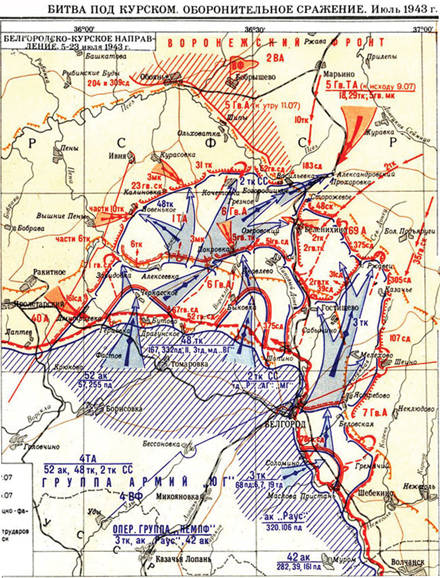
In April, 43-th in the Central and Voronezh fronts lanes more than 100 thousand people were involved in defensive works, and in June almost 300 thousand. Together with the troops, they dug more than 9 thousand km of trenches and communication lines, built 686 bridges, restored more than 2 thousand km of roads. In two months, more than 300 thousand carriages with troops and equipment were delivered under the Kursk. All this was worth the colossal human labor, but it’s not for nothing that they think that ten liters of sweat preserve a liter of blood ...
Numerous delays in the beginning of the German offensive, caused by the desire to use more new tanks, gave the Soviet troops three invaluable months to prepare and improve their defenses. And this time was not wasted. A certain calculation was made by the Soviet command on the use of the new SU152 and SU122 self-propelled artillery systems, the new PTN 1,5 – 2,5 bombs, the new cumulative projectiles of the 460 BP BP, the new fighter La 5 FN.
By the beginning of July, two huge armies concentrated enormous forces on each other for a decisive blow. Voltage was rising in the hot July air ...
Doomed "Citadel"
When the 7 on July 5 in the morning of 1943, after the start of the expected German offensive, the commander of the Central Front, Colonel-General KK Rokossovsky, reported to him on the direct line to the Supreme Command General Headquarters, Stalin asked with a chill: ? ”“ To the fact that our calculations were fully confirmed, which means that the outcome of the battle is predetermined! ”The future marshal replied cheerfully.
The beginning of the battle immediately took a grand scale and was extremely tense. But it soon became clear that the German offensive was not evolving according to plan. The blows of the German groupings were in the nature of gnawing Soviet positions. It was only at the cost of huge losses that they managed to penetrate into our defenses in certain sectors. German troops were in the position of a bear in a trap surrounded by hunting dogs. Tanks and infantry were tied up in a maze of Soviet trenches and minefields, continually sending messages “Stopped! Were digging! .. ”The calculations for the capture of Kursk on the second day were clearly inflated.
On the northern face of the Kursk bulge behind the 8 days of desperate efforts, the Germans managed only to penetrate into the defense of the Central Front in the area of width 10 km and depth of 10 – 12 km in the area of the settlement of Olhovatki and Art. Dives Having lost 42 thousand soldiers and officers, before 500 tanks and assault guns, the enemy did not solve any of the tasks and eventually had to stop the offensive and go on the defensive.
The most dramatic events developed on the southern face of the Kursk Bulge in the defense zone of the Voronezh Front, where the battles were distinguished by great bitterness and heavy losses on our part. Here, the nature of the terrain was more favorable to the use of tanks than on the north face, but the front commander, Colonel-General N. F. Vatutin, was unable to determine the location of the main attack of the enemy, which advanced into the depth of the Soviet defense to 35 km. The Germans, who did not have superiority in tanks, skillfully created six-fold superiority in narrow sectors and under the cover of massive air strikes stubbornly rammed our defenses.
The enemy overcame the front page of the Soviet defense in just 17 hours, and although it was very different from the planned German pace, this rate was regarded as rapid in the Red Army Headquarters.
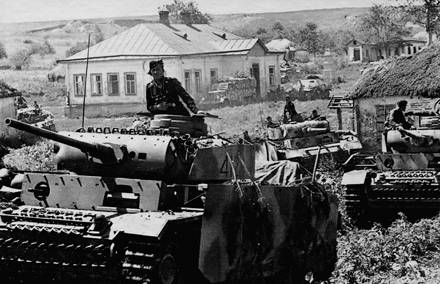
The actions of the enemy were characterized by a high degree of consistency and intensity of the use of fire of all means. For example, groups of 10 – 15 heavy tanks, being beyond the reach of our anti-tank guns and tanks, fired heavy fire on infantry trenches and artillery positions. Under their cover, they attacked medium and light tanks, followed by infantry on armored personnel carriers. Attacks of the enemy were conducted with the powerful support of aviation. Bombers in groups of 50 – 60 aircraft continuously bombed the defenders, although sometimes there were times when enemy aircraft were over the battlefield at the same time before 400 ...
But our troops did not flinch, they cut off the German infantry from the tanks and destroyed it with all kinds of fire, and they broke into hand-to-hand combat with those who broke through into trenches and passages.
In these battles, Soviet gunners used the tactics of the so-called "flashing guns", selected as bait to lure the enemy tanks. "Flashing guns" opened fire on the columns from a great distance, forcing the advancing tanks to deploy on solid minefields and substitute their sides to the batteries that were standing in ambush. Significant damage to enemy tanks inflicted ground attack aircraft, which used new bombs with shaped charges. Soviet attack aircraft pierced the armor of all German tanks, including the "tigers" ...
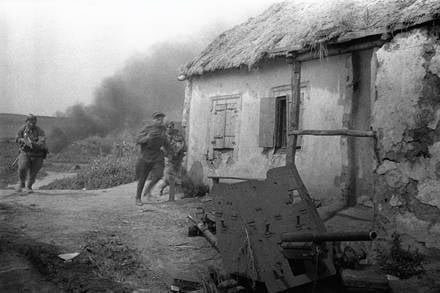
But the enemy’s tanks and infantry, despite heavy losses, continued to persevere, destroying one anti-tank stronghold after another. By July 9, the Germans stopped raking our defenses with a direct blow and began to look for weak areas in it. This direction, according to the German command, was Prokhorovka, from where it was possible to get to Kursk bypass, considering that the offensive on the northern face of the Kursk Bulge was already choking. It was here that the Soviet command sent reserve armies: 5 guards. tank P.? Rotmistrov and 5 Guards. General A.? Zhadova from the Steppe Front. And the German command opposed them to the 2-th SS Panzer Corps? Hausser. On this site in 35 km for seven days the climax battle of the Kursk battle unfolded.
On the morning of 12 on July 1943, German reconnaissance planes with purple rockets alerted their troops to the approach of Soviet tanks. SS brigadeführer Helmut Becker, commander of the regiment of the SS Division “Dead Head”, recalled: “I noticed clouds of dust on the horizon. And soon from these clouds began to appear Russian tanks. These Russians moved their reserves? I said to my chief of staff and realized that we had lost the battle for Kursk. ”
“Yes, the enemy was brave. All the more our glory! ”
These lines of Konstantin Simonov were written about KhalkhinGol, but they can be safely attributed to the battle of Kursk. We must not forget that, despite the defeat at Stalingrad, the Wehrmacht was still a very strong adversary. The system of training and training of troops, the interaction of the types of troops on the battlefield, the organization of communications and control were without exaggeration the best in the world at that time.
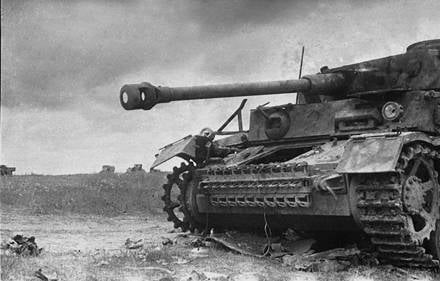
Nazi Germany began preparations for the next “general offensive” on the Eastern Front in April 1943 of the year, mobilizing all its resources and capabilities for this. To compensate for the enormous human losses and to restore the divisions that were defeated in winter battles, the German leadership resorted to total mobilization. For any other operation during the entire period of the Second World War, the military-political leadership of the Third Reich did not prepare as comprehensively, as carefully as for the offensive near Kursk. All tank divisions and a number of infantry divisions were withdrawn from the front edge, where the respite was used to train the troops according to a carefully planned plan. First, classes were conducted on the scale of a platoon, then a company, a battalion, a regiment, and then at the level of divisional exercises. Every square meter of the Kursk bulge was photographed from the air. Starting from company commanders, all the officers commanding the advancing troops spent whole days at the forefront in order to study the terrain and the Soviet defense system. The fire plan and the interaction between artillery and infantry were carefully developed. Especially serious training was conducted to ensure the closest interaction between aviation and ground forces. The morale of the German troops was quite high: they were ready to suffer any losses, but to fulfill all the tasks assigned to them. For the only time during the entire war on the Eastern Front, the German divisions received rest for several weeks before the offensive and were fully staffed and equipped with combat equipment. Thus, the 48 tank corps had more than 300 tanks and 60 assault guns, of which 180 was part of the “Great Germany” division, and 80 of them were new “panthers”. At the cusp of the main attack was the "Hitler's Guard" - the 2-th SS tank corps as part of the SS elite tank divisions Leibstandart, Reich, and Dead Head. “Today,” said Hitler’s address to the troops, which he read on the night before the offensive, “you are launching a great offensive battle that can have a decisive influence on the outcome of the war as a whole. And you should know that everything can depend on the outcome of this battle. ” And the German soldiers acted decisively and skillfully, confident in their superiority.
Peresevshy this time on the "Tiger", the German tank ace Untersturmführer SS Division "Leibstandarte" Michael Wittmann during the Battle of Kursk destroyed 30 Soviet tanks and 28 antitank guns, which amounted to 20% of destroyed them during the war 138 tanks and 132 enemy guns. It was Wittman's battalion that repelled the attack of the 181 of the Soviet tank tank brigade near Prokhorovka ...
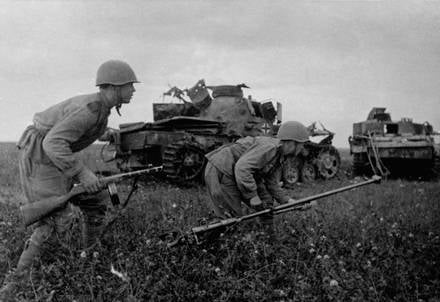
8 July 1943, a single Tiger by SS Untersharführer Franz Staudegger, was attacked with 50 tanks T34. Within two hours, he managed to knock out 17 of them, and when the Soviet tanks retreated, pursued them and knocked out five more ...
On July 12, in the battle of Prokhorovka, the tank company of the SS division Leibstandard under the command of Obersturmführer Rudolf von Ribbentrop, the son of the foreign minister, was attacked by a large group of tanks T34. The distance was reduced to 175 meters, and the effectiveness of the German guns was neutralized. The battle took place in direct contact. In just one day, Ribbentrop's crew destroyed 14 Soviet tanks ... The commander of the 2 Battalion of the 6 Panzer Division, Major Franz Becke, on the night of July 11, captured the heavily fortified town of Rzhavets. At the same time he personally destroyed the manual anti-tank weapons three Soviet tanks ...
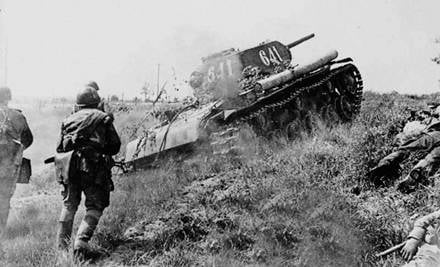
Yes, tactical training, combat experience and determination of German soldiers cost the Soviet side dearly. Now historians characterize the losses of the parties at Kursk as 4: 1 is not in our favor. A loss 5-y Guards. the tank army under Prokhorovka is generally estimated at more than 50% of the initial composition.
But despite our heavy losses, the German offensive turned into a defeat for the enemy. 10 July 1943, the Allies landed on Sicily, thinly opening a second front in Europe, and on July 12, on the day of the Battle of Prokhorovka, the Soviet troops of the Western and Bryansk fronts launched an offensive on the Orel direction according to the plan of Operation Kutuzov. This made senseless further continuation of the offensive. The General Inspector of the German Armored Forces of G.? Guderian wrote: “As a result of the failure of the“ Citadel ”offensive, we suffered a decisive defeat. Needless to say, the Russians were quick to take advantage of the success. And more on the Eastern Front there were no calm days. The initiative is completely transferred to the enemy. "
The main calculation
With the tactical and technical superiority of the Germans and with our numerical and moral superiority, the forces of the parties became approximately equal. The military art of commanders and the combat skills of soldiers and officers came to the fore. Here, the Soviet command relied on the traditional qualities of the Russian soldier - resilience and courage, which over the past two years the war only intensified. This, by the way, was clearly understood by the Germans. This is how Alfred Rubbel, an 503 heavy tank battalion of the tigers, recalled those distant battles of the Tigers: “... We did not expect anything good, because we already knew the Russians as courageous and stubborn soldiers who are very difficult to put to flight. And we had every reason to believe that this would be the case here. Approximately the same thing was told to us by our commanders. ” And the Soviet soldier fully justified the German fears.
Without diminishing the merit of the defenders of the northern flank of the Kursk Bulge, I would like, without going into the course and description of the hostilities, to dwell in more detail on some of the heroic actions of the soldiers and officers of the Voronezh Front, where the most tense situation developed in those July 1943 days. Unlike the Battle of Stalingrad, where mostly infantry took on enemy tank attacks, gunners became heroes of the fighting near Kursk, who stood on their positions until the last breath and the projectile ...
In the morning of July 5, the enemy launched an offensive and threw forward at the 1008 Iptap battery section, Senior Lieutenant Alikhan Gagkaev 35 tanks, including heavy "tigers", and infantry. Reflecting the onslaught, the gunners, along with two neighboring batteries, repulsed two attacks, set fire to 17 tanks, and destroyed up to a company of nazi soldiers. The share personally battery commander had four tanks. When repelling the third attack, when all the guns were disabled, the men switched to grenades and anti-tank guns. Then they grabbed melee in which their commander died.
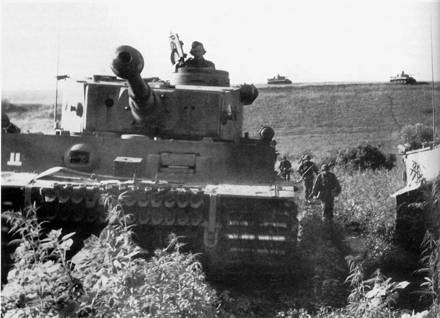
11 July, when in a fire platoon 199 Guards. artillery regiment guards ml. Lieutenant Rostislav Kushlyansky left only one weapon, he bravely entered into an unequal battle with a large group of tanks. His calculation set fire to three and knocked down five tanks. And when his calculation failed, the commander himself began at the gun and one after another knocked out three more tanks, the last shot at the tank was fired at a distance of six meters ... On the same day, July 11, 1943, in the area of Prokhorovka, accomplished his feat 19-year-old Komsomol of the artillery battalion of the 58-th motorized rifle brigade Guards Art. Sergeant Mikhail Borisov. Its battery was attacked by 19 tigers. Taking advantage of the thick smoke that hid the battery from the enemy, the gunners, letting the tanks at a distance of 500 meters, suddenly opened fire and immediately destroyed two tanks. But with the return fire, in just a few minutes of the battle, the "tigers" shot the entire battery. Of the 28 gunners, only the senior sergeant survived, who remained with the only surviving gun. For 17 minutes of battle, he alone, inducing and loading a weapon, knocked out 7 "tigers". He managed to stop the eighth tank with a shot at close range from a distance of 60 meters, but the return shot was seriously wounded ...
No less selflessly and heroically acted Soviet tankers. Clashes with more sophisticated German tanks, superior to Soviet armor and armament, demanded special courage and military skill ... 6 July 1943, near the village of Yakovlevo, a tank platoon of GW. Lieutenant Voldemar Shalandin from 1y Guards. tank brigade joined the battle with a numerically superior enemy. The crew of his tank as a part of senior sergeants V.G. Kustov, V.F. Lekomtsev and sergeant P.E. Zelenin, acting from ambush, let the enemy tanks go to the distance of a direct shot, and then hit two “tigers” and one medium tank.
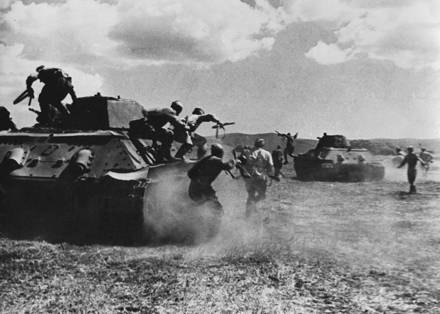
But the tank Shalandina was hit and caught fire. On the burning tank, the Guards crew decided to go to a ram and, on the move, crashing into the side of the "tiger", heroically died ... On the same day, on July 6, the tank was Guards. Lieutenant Ivan Butenko from 25y Guards. a tank brigade near the village of Smorodino unexpectedly ran into eight German tanks that were in ambush. A lieutenant shot down one tank with a cannon shot, but the T34 cannon was disabled by an enemy shell. Then the commander rammed one with a strong frontal armor first, and then another German tank. But his tank was also hit. As a result, the driver was killed and the radio operator was seriously injured. Jumping out of a burning tank, the guard lieutenant snatched a pistol from a German officer, shot him and several other tank crews from the crews of the rammed tanks, and then took the killed officer’s documents and under heavy artillery and mortar fire took out the seriously injured radio operator from the battlefield ...
On July 12, on Prokhorovsky field, an enemy shell smashed the tank and another wounded Captain Skripkin, the commander of the 2 battalion of the 181 tank brigade, seriously. The driver Nikolayev and the radio operator Zyryanov dragged the unconscious officer from the tower and sheltered him in a funnel from the projectile. But on the unarmed crew rolled "Tiger". Nikolaev rushed to his burning tank and in a few moments rushed towards the "Tiger". His words were aired: “Guys! I'm going to ram! Saving the commander! Beat the reptiles! ”“ Tiger ”backed away, wanted to turn around and leave, but did not have time. Nikolaev, having dispersed the burning car, rammed the enemy at full speed. A blow of terrible force shook the earth ...
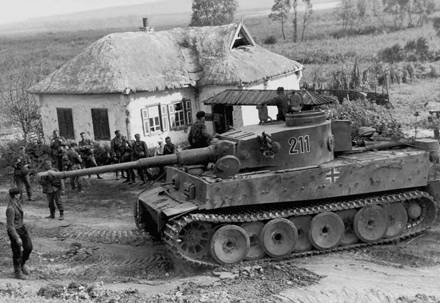
However, probably the hardest trials befell our infantry. Under stormy artillery fire, under continuous bombardment, reflecting tank attacks, tested in battles, impenetrable infantry passed through the thick of the Battle of Kursk in the direct and figurative sense.
5 July 1943, near the village of Maslova Pristan machine-gun company 229-th Guards. rifle regiment under the command of gu. Lieutenant Vladimir Kolesnikov destroyed 300 enemy soldiers and officers in combat, suppressed 14 machine gun points of the enemy, and the commander personally destroyed the Germans from a machine gun to 200. In an unequal fight, the fighters twice went over to the counterattack until they again took possession of their own line at a height where the enemy had not advanced a single step. Being seriously wounded, Kolesnikov categorically refused to leave the battlefield until the company was firmly entrenched in its positions. And only after that he was sent to the hospital.
K 13 July in the platoon of anti-tank guns 284-th Guards. rifle regiment guv. Senior Lieutenant Pavel Shpetnogo left only 9 fighters. The last patrons fighters shot down 6 tanks and died in an unequal battle. When ammunition ran out, Pavel Shpetny with a bunch of anti-tank grenades rushed under the seventh enemy tank.
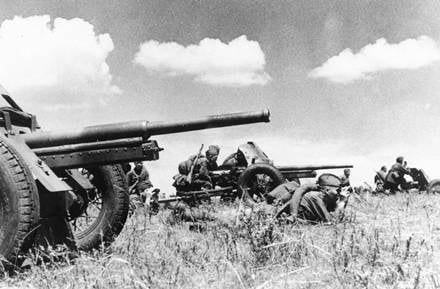
14 july guv. Sergeant of the Medical Service 13 of the Guards. sd Maria Borovichenko saved the life of the wounded lieutenant Kornienko. She covered him with her body, while she managed to knock out an enemy tank with a grenade, but a shard hit the medical instructor right in the heart. The Soviet soldiers went up to attack under a hurricane lead rain, burned alive in their tanks and self-propelled guns, fired their guns to the last shell, forcing the very vaunted "tigers" to burn, which were to ensure victory for the Germans. This is how the German officer of the General Staff, Adolf von Kilmanzegg, spoke of Soviet soldiers: “The Russians were a very special opponent. Wherever I fought, I did not meet such a willingness to die. "
"... For your friends"
12 July 1943 of the year according to the Orthodox calendar is the day of memory of the holy apostles Peter and Paul. In 1995, a memorial church of Peter and Paul was erected in the village of Prokhorovka. On its walls on the marble slabs are carved the names of more than seven thousand Soviet soldiers and officers who died in this area. A few kilometers from the temple, at the height of 252,2, where 12 July 1943 was the epicenter of the Prokhorovsky tank battle, on the field, which became a symbol of courage and perseverance of the Soviet soldier, a Victory monument was erected - a white stone belfry designed by sculptor V.? Klykova. Three times per hour, every twenty minutes a bell rings on the belfry in memory of the fallen heroes on the Kulikovo, Borodino and Prokhorovsky fields. Under the golden dome, above which the figure of the intercessor of Russia - the Virgin Mary is set, words in the Church Slavonic language are drawn out in large golden letters from the Bible: “I’m more like sowing love, but who will put his soul for his friends”. Let us remember them in our thoughts ...
Information